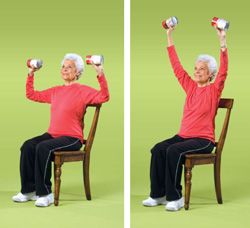 I wrote this essay a few years ago, but I think it’s still very relevant. I recently read that it’s most often the caregiver that needs to change in order to make the arrangement work, rather than the care receiver. That’s even more salient when the care receiver experiences dementia. The inner work of dementia caregiving relates to the techniques and approaches that one can use to be less stressed and more open to the experiences that such caregiving affords.
I wrote this essay a few years ago, but I think it’s still very relevant. I recently read that it’s most often the caregiver that needs to change in order to make the arrangement work, rather than the care receiver. That’s even more salient when the care receiver experiences dementia. The inner work of dementia caregiving relates to the techniques and approaches that one can use to be less stressed and more open to the experiences that such caregiving affords.
The Inner Work of Dementia Caregiving
Caring for a person with dementia provides an opportunity for considerable inner work. Since the caregiver often has little external control over much of the caregiving context, working with oneself to stretch capabilities and improve coping allows for some amount of control internally. In addition, the caregiving context can be reframed as something of benefit to the caregiver, when the caregiver commits to internal personal growth goals.
These goals may include such outcomes as increased patience, improved observational skills, enhanced empathy, increased compassion, greater psychological endurance, enhanced self esteem, improved self-control, greater self knowledge, better limit setting, assertiveness, increased ability to be in the moment, beneficial use of humor, better delineation of self versus other, ability to use perspective effectively, overcoming traumas of the past, inner balance and centering, spiritual connection, effective use of self-expression, and surrender to a Higher Power. When these benefits are recognized and cultivated, the caregiver can credit her- or himself with the achievements attained in this arena, in addition to the benefit of care to the care receiver.
One might argue that dementia caregiving is hard enough. Why add another layer of effort to the endeavor? Because the attainment of these inner goals directly improves a person’s ability to cope with the caregiving, and any challenging situation for the rest of her or his life! I would assert that improvement in any of these areas is likely to enhance the caregiver’s quality of life overall. The following are more concrete examples of how these inner talents can be cultivated and used:
- If you find yourself feeling impatient, angry, and resentful with the care receiver for more than a few minutes at a time, this is an indicator that you are out of balance in giving and receiving (inner balance and centering). You need to do some things for yourself that will equal the flow of your energy going out. There are numerous ways to do this. If you can’t find someone to relieve you right now, as soon as possible find a safe context for the care receiver, and give yourself a momentary break. Take deep breaths. Go outside for a few minutes or go in the bathroom and cry or be your own cheerleader and point out how much you have accomplished or play a favorite song or do a few yoga postures or listen to a few minutes of a meditation tape or call a friend for moral support or have a healthy snack… whatever is satisfying for you. Then take a few more deep breaths and return to the caregiving situation.
- If you’re feeling overwhelmed by the events of the day try to find humor in the absurdity of it all (beneficial use of humor) or use perspective to help you cope (effective use of perspective). If the present moment seems pleasant, focus in on your immediate experience and savor every aspect of it. For example, if the you and the care receiver are eating a tasty lunch, focus in on the experience. Smell the aroma of the food; taste all the nuances of flavor; enjoy the care receiver’s absorption in eating and pleasure in the food; appreciate the opportunity to sit down and relax. Really take in the benefit of that moment before you turn to resolving problems. If the present moment seems chaotic, focus on the bigger picture, such as how you are keeping your loved one in a safe and caring environment or only having another day before you get a break or how you’re growing from the experience. If you’re overwhelmed with the immediate situation, do what is immediately necessary for the safety of the care receiver and yourself, then focus in on each step, and celebrate accomplishing each piece of the bigger challenge. Or ask for guidance and inspiration, and open your mind with expectation and confidence. Often a helpful idea will emerge that puts things in a different light or provides a creative approach to the situation (spiritual connection).
- Sometimes you’re dealing with situations that result from the long term life choices of the care receiver. It’s tempting to feel that, as caregiver, you should fix it all. However, it’s unrealistic and unfair to expect that you can correct the outcome of a person’s life. For example, if the care receiver didn’t use their funds wisely, you cannot be expected to use up your retirement savings to provide for their care. If the care receiver was difficult to get along with and alienated friends and family members, you cannot be expected to relieve the person’s loneliness (limit setting, delineation of self versus other). You can be compassionate, supportive, and helpful, within the means that you can spare. And that’s enough!
- If you’re reluctant to receive help from others, ask yourself why you’re not taking advantage of the opportunity (self knowledge). Is your self-esteem dependent on the caregiving role? Do you believe no one else can do it as well? Do you want to be special to the care receiver? Are you trying to solely control the care receiver’s care? Have you lost touch with other aspects of yourself and your life? Are you swinging between the negative poles of guilt and resentment? What is the cost of these attitudes, to you, to the person offering to help, and to the care receiver?
Committing to inner work as a caregiver helps to shift the locus of control from the care receiver and her or his needs and wants to the caregiver and her or his goals for personal growth. The caregiving relationship needs to work for all parties concerned. There needs to be reciprocity in the relationship and a balance in giving and receiving. A person with dementia often cannot directly express her or his appreciation or gratitude, so that avenue of reciprocity may not be available. The caregiver, then, must be able to recognize the benefit to the care receiver resulting from her or his care, as well as to discern the present and future benefits to the caregiver from undertaking the care of another. Consciously engaging in inner work highlights these intangible but powerful benefits, and results in internal resources that enhance quality of life. Sue Sweeney, Chair, Gerontology Department, Madonna University
 The National Council on Aging has an excellent resource for older adults in need of assistance. BenefitsCheckUp is a Web site that screens the user for eligibility for a number of benefits at the federal or state level. The site claims that the service has helped 3,678,107 people find over $13.5 billion worth of benefits. The tool asks a number of questions about the user’s needs, interests, marital status, veteran status, income, assets, home ownership, expenses, and other questions that build from the answers that the user supplies to earlier questions. You can use the tool for another person, as long as you answer as if you were that person.
The National Council on Aging has an excellent resource for older adults in need of assistance. BenefitsCheckUp is a Web site that screens the user for eligibility for a number of benefits at the federal or state level. The site claims that the service has helped 3,678,107 people find over $13.5 billion worth of benefits. The tool asks a number of questions about the user’s needs, interests, marital status, veteran status, income, assets, home ownership, expenses, and other questions that build from the answers that the user supplies to earlier questions. You can use the tool for another person, as long as you answer as if you were that person.


